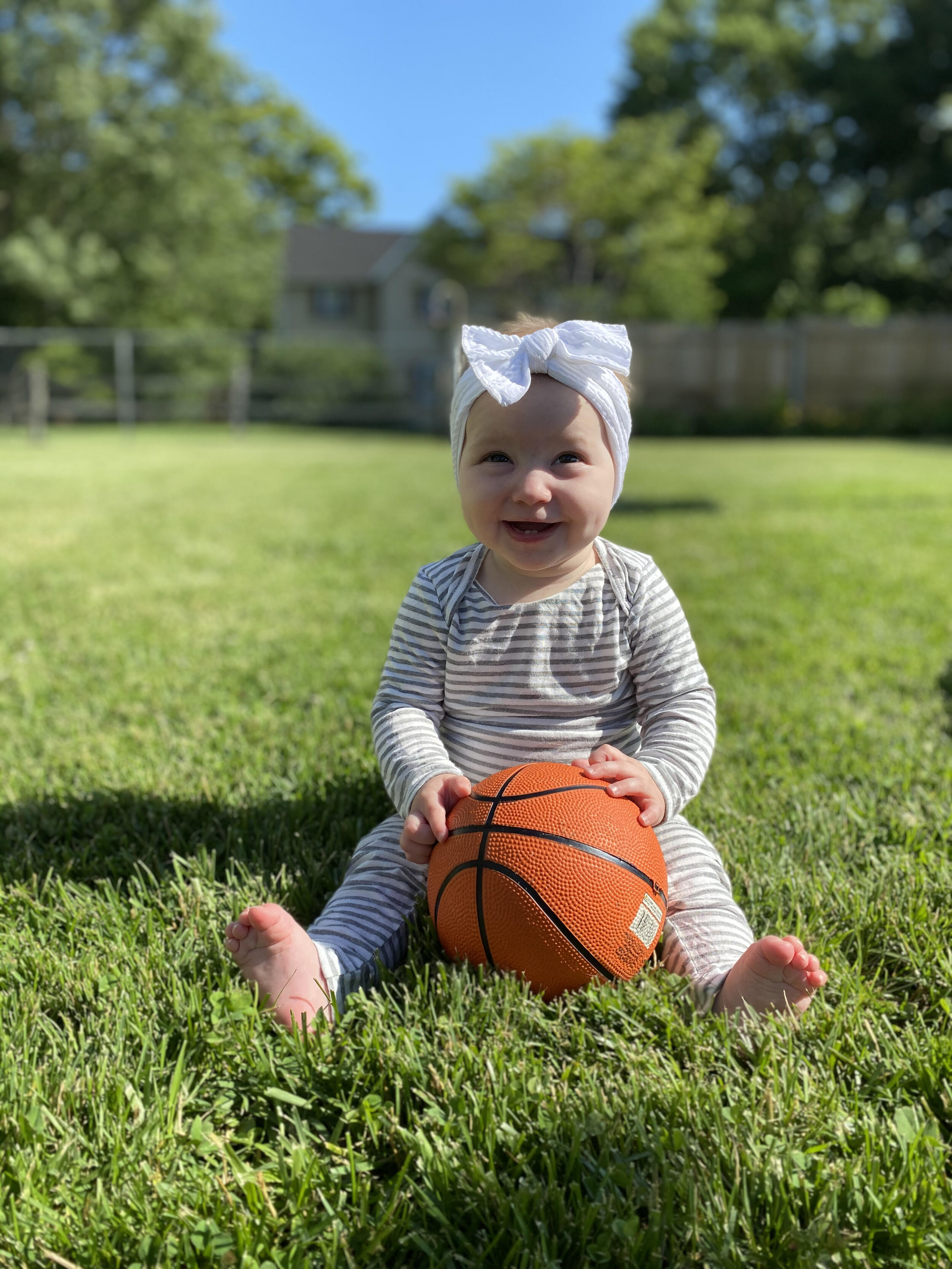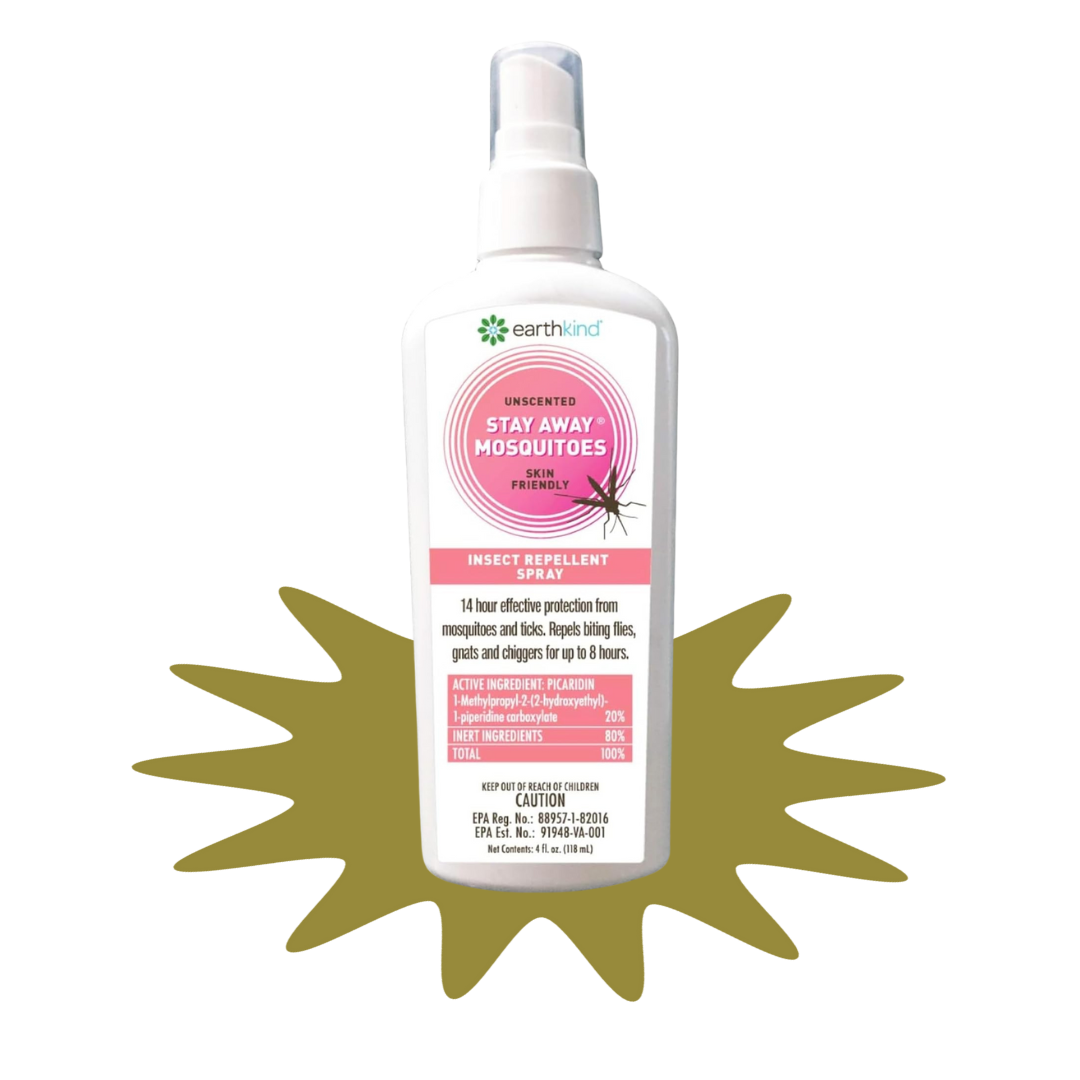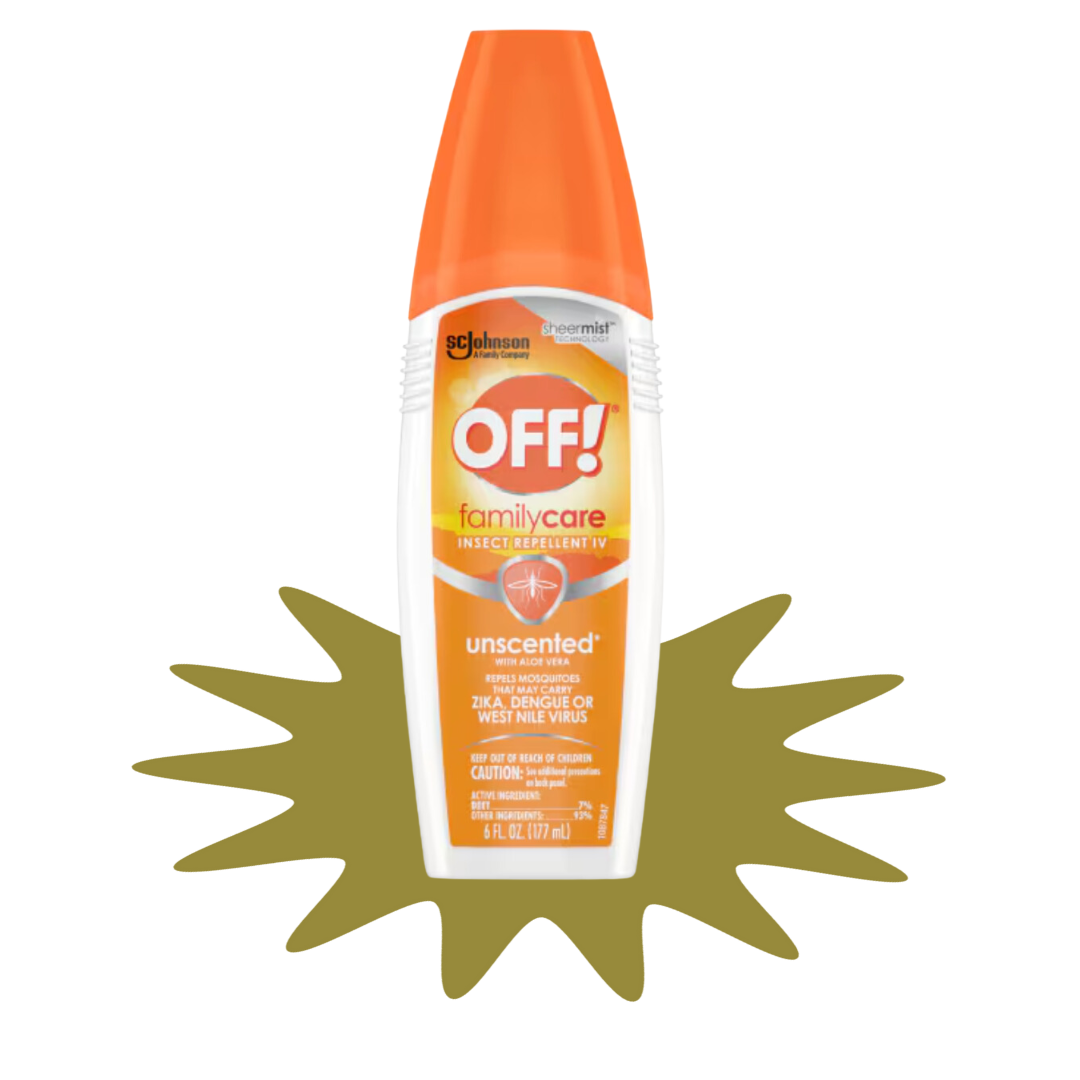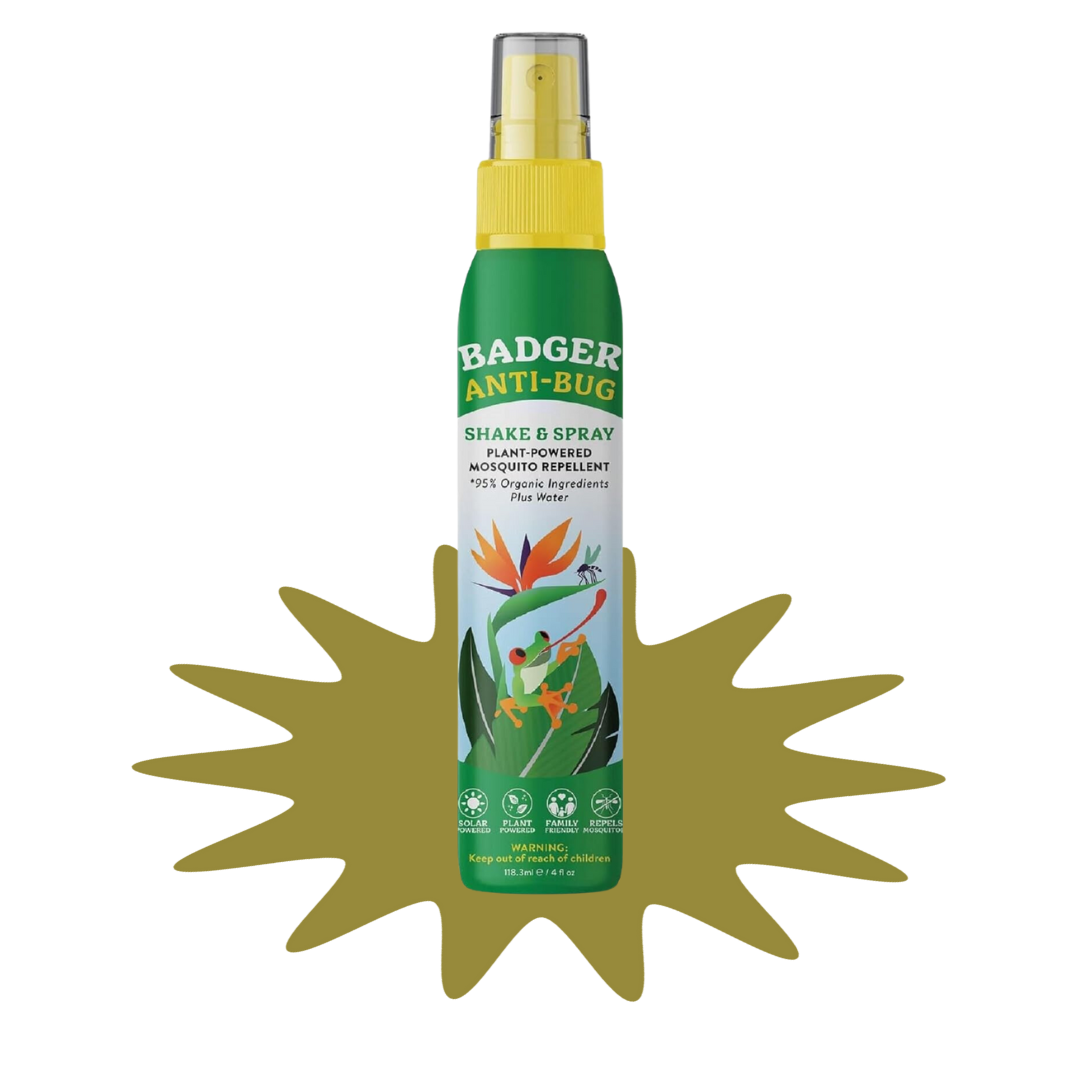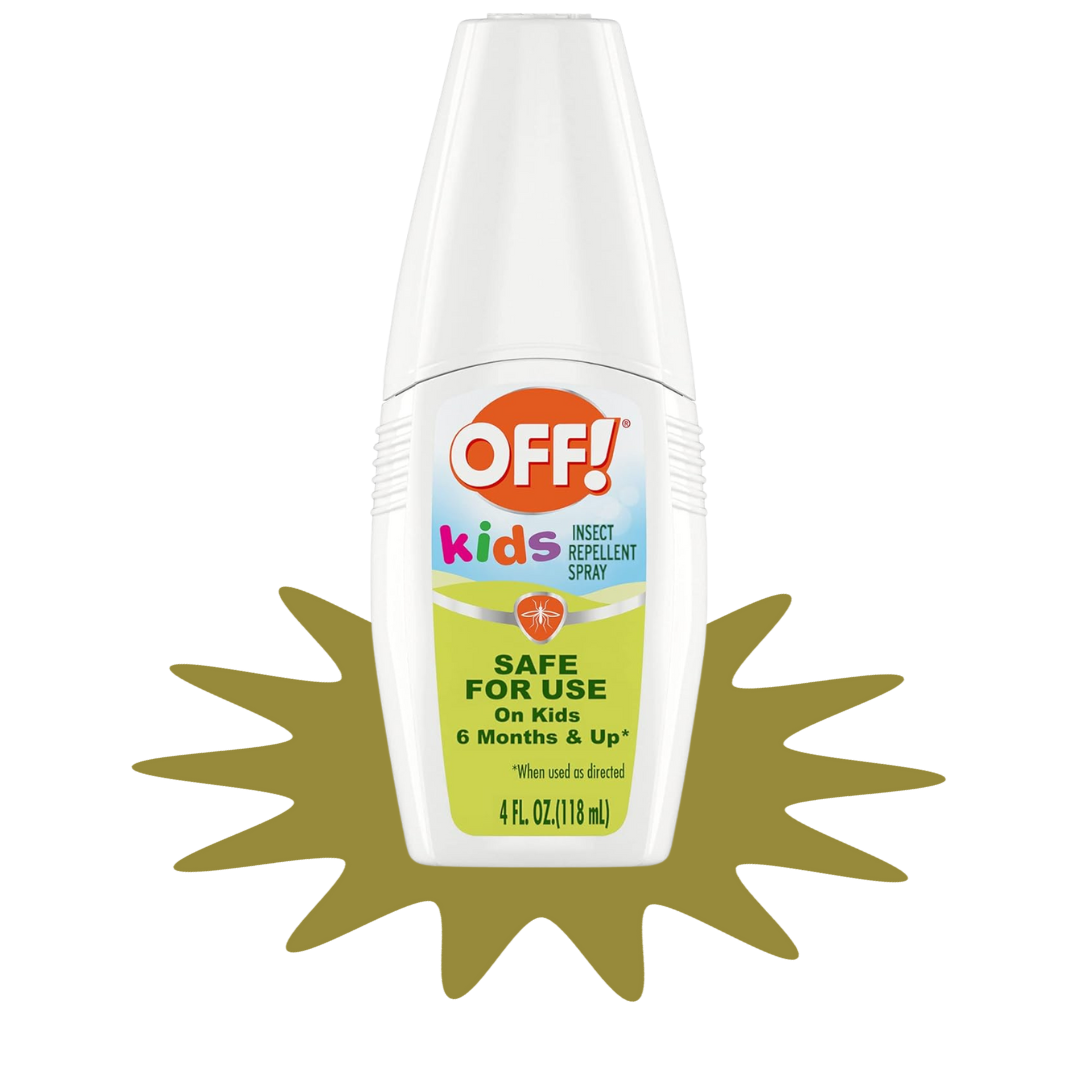Safest Bug Sprays for Babies
After breaking down sunscreens in my summer with babes post here, I received multiple messages asking if I could write one with bug spray recommendations that are safest for babies as well. I have done a vast amount of research on this topic, since I have 5 kids of my own, and we spend a lot of time outside in the spring and summer, especially at my in-laws’ lake house!
I want you parents to feel as confident as possible when you’re going on exciting outdoor adventures with your babies— those memories are always held so close to your hearts! Whether you’re at the beach, in the woods, on a boat, or in the pool— there. are. always. bugs. We all want to choose the “safest” option, but we also want effectiveness to protect our sweet babies!
The insects we really want to protect against are the ones that have the potential to carry threats like Lyme, Zika, and West Nile— aka ticks + mosquitos. Your geographic location, as well as weighing risk vs benefits when choosing an insect repellent will help aid in your specific decision. There is no one “right answer” for everyone! *Cue me saying “there are always options” *— but there really are! There are sprays, creams, sticks… there are more “natural” options, and some with AAP-approved ingredients like DEET + Picaridin (read more below). One thing to remember is that bug sprays protect against biting insects like flies, ticks, and mosquitos; but not stinging insects like bees or wasps. Let’s run through some facts, then share some options in different categories to narrow down what works for YOU.
Disclosure: Some of the links below are affiliate links, meaning that at no additional cost to you, I will earn a commission if you click through and make a purchase.
IMPORTANT facts ABOUT BUG SPRAYS
It’s best practice not to use a combination sunscreen + insect repellent!
Why? Great question! You typically need to re-apply sunscreen WAY more often than you need to reapply insect repellent. We don’t want to over-do it on the amount of bug spray we are applying to our babies, especially when it contains DEET. Also, DEET can make SPF less effective.
It’s best practice and the AAP recommendation not to use bug spray on babies less than 2 months old.
Application to face is done by spraying onto hands, then rubbing on baby’s cheeks and forehead (avoiding the eyes and mouth). Do not spray directly to baby’s face. Also best to apply outdoors, or in well-ventilated area to reduce inhalation.
More isn’t always “more”— dousing your baby in more spray is not going to keep more bugs away and can actually be less effective. Just use enough to cover their clothing and exposed skin.
Only reapply if needed— Follow dosing instructions on back, but only reapply if needed per instructions.
If out in the sun and also applying sunscreen— apply sunscreen first, then insect repellent.
Give your baby a bath when you are back inside for the night. This removes any repellent and/or chemicals. Also, wash their clothes before they are worn again.
SO, WHAT’S THE LOWDOWN ON BUG SPRAY ingredients
There are multiple brands of bug spray with multiple different chemicals/ ingredients. How do we know what’s safe, yet effective enough for our baby? Let’s walk through some of the ingredients you may find in insect repellents to help narrow down your search! Decide which works best for you and your family, this section will just simply state facts provided by ingredient lists and the American Academy of Pediatrics. Your repellent doesn’t need to have all of these ingredients, but should have one of these ingredients to be effective!
DEET
DEET is a chemical repellent that is considered the “most effective defense” against insects. The AAP have deemed DEET safe for babies when used properly. The AAP recommends products with no more than 10-30% DEET to be used on babies and children due to suggestion of overexposure posing possible risk of neurotoxicity. Neurotoxicities include seizures, neuropathies, tremors, and paralysis— they are extremely, extremely rare, but something I think every parent should be aware of before purchasing.
Lasts about 2-5 hours depending on % of concentration
Higher % of concentration does not mean more effective, just that it lasts longer. However >30% DEET has not been shown to offer “additional protection” and is not recommended by the AAP
EXAMPLE: Products with 10% DEET may protect for about 2 hours, while products with 30% DEET last around 5 hours
Picaridin
The AAP recommends products with <20% Picaridin to be used on babies and children. This tends to be recommended as a “safer” ingredient than DEET and can be very effective. I prefer Picaridin over DEET when using repellent on my babies and kids in '“high risk” areas like woods, by lakes, etc.
Performs similarly to DEET and has low inhalation toxicity
No evidence linked to endocrine disruption, reproductive toxicity, or neurotoxicity
Lasts about 3-8 hours dependent on concentration (Picaridin 5%= 2-4 hours coverage, 20%= 8-12 hours coverage)
shop picaridin repellents
Essential Oils
In April 2005, the CDC recommended that natural oil repellents such as 2% soybean oil, peppermint based, citronella based, cedarwood, etc may repel as well as DEET if you’re looking for a more natural option. Oil of lemon eucalyptus based repellents have not been well studied in children under 3 years old, so should not be used in babies. I like using essential oil repellent (my fave is hello bello and badger!) for “lower risk” areas like a backyard BBQ. I personally don’t find them as effective as other active ingredient repellents, but they do okay in lower-risk situations and are less toxic (however, can still cause skin sensitivities just like any other topical spray).
Comparable to about 10% DEET (lasting around 2 hours)
Many contain citronella, cedar, eucalyptus, or soybean
shop essential oil based repellents
Badger Insect Repellant | California Baby Insect Repellant | Off! Kids- Plant Based
OTHER methods OF PROTECTION
Insect repellents truly are amazing, but there are a few basic rules to follow to lessen the chances of getting bit. Even just following some of these, alone, can reduce the number of bug bites.
Avoid dressing baby in bright colors or flowery prints, as these can actually attract insects!
Avoid using scented soaps, perfumes, sprays on baby, as these can attract insects as well
Avoid standing near garbage cans, stagnant water (puddles), and flowerbeds, as these are breeding grounds for bugs
Check for bites/ticks at the end of each day you’ve been outside
Dress in long clothing when applicable and use mosquito netting around baby carriers and strollers if needed (always supervised) especially in babies <2 months old who cannot use repellent
Holy macrole, I know that’s a lot! I hope this helps break down the different ingredients, rules and recommendations within those ingredients, extra tips and “do’s” vs “don’ts”. These facts were all provided by the CDC and AAP. This information should not be used in place of the recommendations from your pediatrician, nor does it serve as medical advice. This post also contains affiliate links and I do make a small commission when you shop them (never expected, always appreciated!). I hope this serves you well in making the best decision for you and your family!
xx, karrie
SHOP BABY SAFE BUG SPRAYS HERE
Was this helpful? Save it for later!


